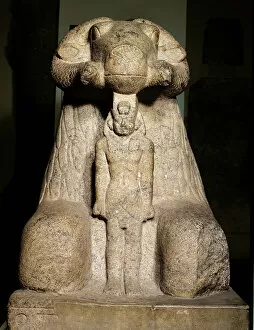Ram Headed Collection
The ram-headed deity has long been a symbol of power and protection in ancient Egyptian culture
All Professionally Made to Order for Quick Shipping
The ram-headed deity has long been a symbol of power and protection in ancient Egyptian culture. Dating back to the 22nd Dynasty or later, an amulet depicting this divine figure showcases the craftsmanship and reverence for these mythical beings. In the Book of the Dead, we find a detailed illustration by priest Aha-Mer, where Anubis weighs souls against a feather, highlighting the importance of judgment and afterlife beliefs. As one walks along the Processional Way to the Great Temple of Amun they can greeted by an awe-inspiring sight – an avenue lined with majestic ram-headed sphinxes. These magnificent creatures serve as guardians and guides on this sacred path. Khnum, another prominent god depicted in various forms such as statues and reliefs, exemplifies creation and fertility. The colorful lithograph from 1823 beautifully captures Khnum's essence as he shapes mankind on his potter's wheel. One cannot overlook King Taharqa's statue protected by Amun in his ram form. Crafted from granite during 690-664 BC, it represents both royal authority and divine intervention. Intricate limestone carvings reveal depictions of Khnum adorning screen walls within temples dedicated to him. These reliefs showcase his significance as a creator god shaping life itself. Luxor's Karnak temple boasts an impressive Avenue of ram-headed Sphinxes that leads visitors into a world steeped in history and spirituality. Walking among these stone guardians evokes a sense of wonderment at Egypt's rich cultural heritage. Reliefs portraying kings alongside ram-headed gods further emphasize their close association with royalty and divinity. These images provide insight into ancient Egyptian beliefs regarding their rulers' connection to higher powers. Pharaoh Taharqa erected shrines within Temple courts dedicated to Amun; here too can be found relief carvings featuring ram-headed deities paying homage to their worshippers' devotion.











